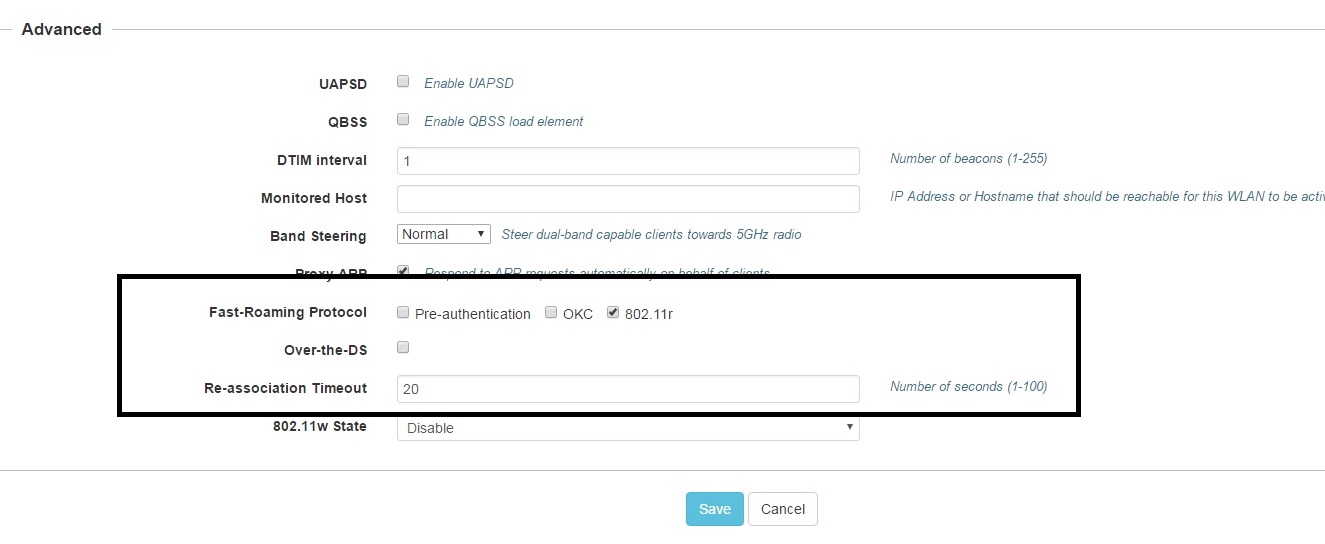What Does TAA Compliance Mean?
TAA (Trade Agreements Act) compliance means that a product is manufactured or substantially transformed in the United States or in a designated TAA-compliant country. This is a requirement for government contracts, ensuring that products meet specific sourcing standards set by the U.S. government. Businesses and organizations that require secure, high-quality networking solutions must use TAA-compliant PTP equipment to remain eligible for government-funded projects.
Who Needs TAA-Compliant PTP Equipment?
TAA-compliant PTP networking equipment, including point-to-point radios, is essential for:
-
Government agencies (federal, state, and local) that require compliant technology for secure communication.
-
Military and defense contractors needing reliable and secure wireless networks.
-
Public safety organizations, such as police, fire, and emergency response teams.
-
Educational institutions receiving federal funding, ensuring compliance with grant regulations.
-
Government contractors looking to maintain eligibility for federal projects.
-
Healthcare and critical infrastructure sectors requiring secure and high-performance wireless networking solutions.
For these organizations, purchasing TAA-compliant equipment ensures adherence to regulatory standards while maintaining a high level of performance and security.
TAA-Compliant Point-to-Point Radios from GNS Wireless
If you need high-performance, government-approved wireless networking, GNS Wireless offers Proxim MP 10100 and QB 10100 series radios—both of which are TAA-compliant. These radios provide:
✅ Secure and Reliable Communications – Perfect for mission-critical government and enterprise networks.
✅ Long-Distance Connectivity – Supports high-speed data transfer over extended distances.
✅ Robust Weatherproof Design – Built to withstand harsh environments for outdoor deployments.
✅ Seamless Integration – Works with existing infrastructure for easy installation and scalability.
✅ High-Performance Wireless Backhaul – Ideal for connecting remote locations, surveillance networks, and government facilities.
Why Choose GNS Wireless for TAA-Compliant PTP Equipment?
When purchasing TAA-compliant networking equipment, it’s crucial to work with a trusted supplier that understands compliance requirements. GNS Wireless provides:
-
Expert Consultation – We help you select the right TAA-compliant solution for your needs.
-
U.S.-Based Technical Support – Real-world installation experience ensures you get hands-on guidance and assistance.
-
Reliable, High-Quality Equipment – Our products meet strict performance and compliance standards to keep your network running smoothly.
-
Competitive Pricing & Fast Shipping – Get the best deals on TAA-compliant networking solutions with quick order fulfillment.
Need TAA-Compliant Wireless Solutions? Get Started Today!
If your organization requires TAA-compliant point-to-point radios, look no further than GNS Wireless. Whether for government applications, secure enterprise networking, or military-grade communications, we have the right solutions to meet your needs.
📞 Call us today at (877) 209-5152 to speak with a TAA compliance point to point expert.
🌐 Visit www.gnswireless.com to explore our full range of TAA-compliant networking equipment!
Reliable, High-Speed Internet for Your Guests—Anywhere, Anytime
Why Campground WiFi Matters
Today’s campers expect more than just nature and fresh air—they want fast, seamless WiFi to stay connected, work remotely, and stream entertainment. Poor connectivity leads to bad reviews, shorter stays, and lost revenue.
That’s why GNS Wireless provides cutting-edge WiFi design solutions tailored specifically for campgrounds, RV parks, and outdoor resorts. Whether you’re looking to cover a small campground or a large RV park, our team designs and installs high-performance networks built to handle multiple devices and heavy data usage.
Challenges of Campground WiFi & Our Solutions
Campground WiFi comes with unique challenges, but we have the right technology and expertise to solve them:
✅ Large Coverage Areas – We use long-range outdoor access points to ensure seamless connectivity across your entire property.
✅ High User Demand – Our dual-band WiFi solutions provide strong, uninterrupted service even with many users online at once.
✅ Harsh Outdoor Conditions – We offer weatherproof access points designed to withstand extreme temperatures, rain, and wind.
✅ Remote Locations – Need internet in hard-to-reach areas? Our point-to-point wireless bridges extend connectivity without expensive trenching or cabling.
Our WiFi Design & Installation Process
Our experts work with you to create a custom WiFi network based on your campground’s unique layout and connectivity needs.
1. Site Assessment & Coverage Mapping
We analyze your campground’s size, terrain, and guest capacity to determine the best access points, repeaters, and routers for complete coverage.
2. Custom WiFi Network Design
Using advanced mesh networking solutions, we design a seamless, scalable system that eliminates dead zones and optimizes speed.
3. Equipment Selection
We supply top-rated WiFi hardware, including:
- Outdoor WiFi access points for long-range coverage
- High-gain antennas to boost signal strength
- Guest WiFi management systems with bandwidth control and login portals
- Off Grid Solar Solutions
4. Installation & Optimization
Our technicians ensure that your WiFi system is professionally installed and optimized for peak performance.
5. Ongoing Support & Monitoring
We offer remote troubleshooting, firmware updates, and performance monitoring to keep your network running smoothly.
Key Features & Benefits
📡 Seamless Coverage – No dead zones, even in large or wooded areas.
⚡ Fast & Reliable Speeds – Supports streaming, gaming, and video calls without lag.
🔒 Secure Network – Protects guest and business data from cyber threats.
📊 Guest Management Tools – Limit bandwidth, create login pages, and track usage with WiFi hotspot controllers.
🛠️ Scalable Solutions – Easily expand your network as your campground grows.
Case Studies & Success Stories
See how our campground WiFi solutions have transformed outdoor resorts across the country.
🔹 Read Our Success Stories
Get a Free WiFi Assessment Today!
Don’t let slow or unreliable WiFi hurt your campground’s reputation. Let our team design a network that keeps your guests happy and connected!
GNS will provide a visual representation of how the WiFi design works including access points, repeaters, coverage zones, signal strength and recommended internet bandwidth limits.
📞 Call Us: 877-209-5152
📩 Email Us: support@gnswireless.com
Navigating the different wireless point-to-point (PtP) solutions from GNS Wireless can feel overwhelming, but breaking it down step-by-step will help you find the best solution for your needs. Here’s a guide to help you get started:
1. Understand Your Requirements
Ask yourself these questions to narrow down your options:
- Distance: How far do you need to send the signal? (e.g., short range for under 1 mile, long range for over 5 miles)
- Bandwidth Needs: What speeds do you require? (e.g., basic browsing vs. video streaming)
- Environment: Will this be used in an urban area, a rural setting, or across obstacles like trees, hills, or buildings?
- Usage: Is this for personal use, a business, or a surveillance setup?
2. Explore GNS Wireless PtP Solutions
GNS Wireless offers various products tailored to specific needs. Here are some categories you’ll find:
- Short-Range PtP Kits: Ideal for connecting nearby buildings or outdoor cameras within a mile or less with the popular GNS-1153AC.
- Mid-Range PtP Solutions: Designed for connections greater than 1 mile, often with higher bandwidth and reliability, the GNS-1155AC is the way to go.
- Long-Range PtP Systems: Perfect for distances over 5 miles, suitable for connecting remote sites or extending networks over large areas. Best to contact GNS directly for anything over 5 miles.
- Specialized Systems: These include weatherproof, solar-powered, or outdoor-ready solutions for industrial grade – harsh environments, use Proxim Gigabit PTP.
3. Check Key Features
When comparing products, pay attention to these key features:
- Frequency Band: Most PtP systems operate on 2.4GHz or 5GHz. 5GHz generally offers better speed and less interference but has a shorter range. However 60 GHz allows for short range, interference free PTP.
- Signal Power and Gain: Higher gain antennas (measured in dBi) provide stronger and longer-range signals.
- Ease of Installation: Some systems are plug-and-play, while others may require more advanced setup.
- Budget: Prices can vary widely, so look for a system that balances performance with cost.
4. Ask for Expert Help
GNS Wireless offers customer support to help you choose the right product.
- Call or Email: Reach out to GNS with your specific needs for personalized recommendations.
- Website Resources: Check GNS Wireless’s website for product comparison charts, FAQs, and detailed specs.
- User Reviews: Look at reviews and testimonials from other users with similar requirements.
5. Start with a Starter Kit
If you’re new to PtP setups, consider starting with an all-in-one kit designed for beginners. These typically include everything you need (antennas, mounting hardware, cables, and power supplies) and often come pre-configured. We have ready to ship packages ranging from the GNS-1163AC short range kit, to long range GNS-5422 packages available.
6. Plan Your Installation
Once you’ve chosen a solution, plan your installation carefully:
- Identify clear line-of-sight locations.
- Determine the best mounting method for your environment.
- Test the connection before securing everything in place.
By identifying your needs and using GNS Wireless’s support resources, you’ll be able to confidently select the right PtP solution! Call us today to go over your specific application and we will provide recommendations or further guidance.
Setting up a GNS wireless hotspot antenna can seem intimidating, but it’s straightforward if you break it down into manageable steps. Here’s how to do it:
What You’ll Need:
- GNS Wireless Hotspot Antenna Kit: Ensure you have all components (antenna, mounting hardware, cables, power adapter, etc.).
- Tools: A screwdriver, wrench, or any tools provided in the kit.
- A Stable Location: Choose a spot with a clear line of sight, like a rooftop or a wall mount.
- Wi-Fi Router or Network: Ensure your network is ready to connect to the antenna.
Step-by-Step Installation:
1. Choose the Right Location
- Find a high, unobstructed spot for better signal reception and broadcasting.
- Avoid obstacles like trees, thick walls, or large metal objects.
- For areas where your elevation is flat, typically about 20ft. high is ideal.
2. Assemble the Antenna
- Follow the instructions in the manual to put the antenna together.
- Attach the mounting hardware (like brackets or clamps) securely.
3. Mount the Antenna
- Use the provided hardware to mount the antenna to the chosen location.
- Ensure it’s tightly secured and angled according to the manual (usually towards the area you want coverage).
4. Connect the Cables
- Attach the antenna cable to the input port on the antenna.
- Connect the other end to your Wi-Fi router or access point as directed.
5. Power Up
- Plug in the power adapter (POE if applicable) and switch it on.
- Some models may require a connection to a Power over Ethernet (PoE) adapter; refer to your manual for details.
6. Configure the Settings
- Access the antenna’s setup page on a computer or smartphone. The manual will provide an IP address or app to use.
- Because the AP is typically pre-configured, please refer to the diagram included with the package from GNS.
- Follow the setup wizard to connect it to your network and optimize the signal strength.
7. Test the Signal
- Walk around your space with a device to ensure the signal strength is strong where needed.
- Adjust the antenna’s position slightly if required to improve coverage.
- Testing the signal with a smartphone is ideal to make sure you have adequate coverage.
Troubleshooting Tips:
- Weak Signal? Reposition the antenna higher or towards the coverage area.
- Dead Spots? Contact us regarding additional access points throughout the area.
- No Connection? Double-check cables and ensure your Wi-Fi router is working.
- Need Help? Look for a support number in the manual or call us directly at (877) 209-5152.
Choosing the right WiFi setup for your RV park is essential in today’s tech-savvy world, where guests expect fast and reliable internet access.
Whether they’re checking emails, streaming shows, or even working remotely, your visitors rely on WiFi just as much as water and electricity. But how do you choose the right WiFi setup for your park…Call us! With so many options available, it can feel overwhelming. Here’s a step-by-step guide to help you select the best WiFi solution for your RV park.
1. Assess Your Park’s Layout and Size
The first step in choosing the right WiFi setup is understanding your park’s layout and size. Larger parks with sprawling layouts will need different equipment than smaller, more compact parks. Think about the following factors:
- Number of RV Sites: How many guests will be using your WiFi simultaneously? A small park might only need coverage for a handful of users, while a larger park with 100+ sites will require a more robust system.
- Layout and Obstacles: Is your park spread out over a large area, or are there many trees and hills that could block signals? WiFi signals can be affected by physical obstacles, so parks with many structures or dense vegetation might need more access points.
Solution:
- Small Parks (up to 50 sites): A basic WiFi system with one or two access points may be sufficient.
- Medium Parks (50–200 sites): You’ll need multiple access points spread strategically across the park.
- Large Parks (200+ sites): A larger, enterprise-grade WiFi system with multiple access points and stronger equipment will be necessary to ensure strong coverage.
2. Determine Your Bandwidth Requirements
Your guests’ internet needs will vary depending on the type of activities they engage in. Some will be checking emails, while others might be streaming videos or using video calls for remote work. Consider what kind of activities your WiFi should support:
- Basic Browsing and Email: Minimal bandwidth requirements, suitable for parks where guests use WiFi sparingly.
- Streaming and Video Calls: Higher bandwidth requirements, as these activities use more data.
- Remote Work: If your park attracts digital nomads or remote workers, you’ll need strong, fast WiFi to accommodate video conferences and large file transfers.
Solution:
- Work with GNS WIRELESS to assess how much bandwidth your park needs based on the number of guests and the types of internet activities they’ll be engaging in. As a general rule:
- Basic Internet: 1–5 Mbps per user.
- Streaming or Remote Work: 10–25 Mbps per user.
3. Consider Scalability
If you plan to grow your RV park or anticipate more guests during peak seasons, it’s important to choose a scalable WiFi solution. You don’t want to install a system that only works for your current needs but won’t accommodate future growth. A scalable system lets you expand your WiFi coverage easily without replacing the entire setup.
Solution:
- Choose a WiFi setup that allows for easy addition of more access points or upgrades as your park expands or guest traffic increases. GNS Wireless, for example, offers scalable systems that can grow with your business.
4. Choose the Right Equipment
The equipment you choose will determine the quality and coverage of your WiFi system. This includes routers, access points, antennas, and other devices that help distribute the signal across your park. This is where we specialize. We make it easy to select the correct equipment, no matter the size of the park.
Key Equipment to Consider:
- Outdoor Access Points: These are weatherproof devices that broadcast WiFi signals across large outdoor areas.
- Antennas: Directional antennas can focus WiFi signals over long distances, ideal for large parks.
- WiFi Controllers: These devices help manage and optimize your network, making it easier to control the flow of data and ensure even distribution across all users.
Solution:
- Consult with a professional provider like GNS Wireless to ensure you have the right combination of equipment for your park’s specific needs.
5. Focus on Security and Guest Management
When providing public WiFi, security is critical to protect both your guests and your network. A good WiFi system should allow you to manage guest access while ensuring that your network is safe from unauthorized users or hackers.
Security Features to Look For:
- Password-Protected Networks: Ensure guests can only access WiFi with a secure password.
- Guest WiFi Networks: Set up a separate network for guests, keeping it isolated from your internal systems for extra security.
- Data Usage Controls: Some systems allow you to limit the amount of data each user can consume, preventing a few users from hogging all the bandwidth.
Solution:
- Choose a WiFi system that includes built-in security features such as firewalls, encryption, and guest network management tools and cloud access.
6. Consider Support and Maintenance
Even the best WiFi system will need occasional maintenance or troubleshooting. Whether it’s a technical issue or just needing to expand the system, you want a WiFi provider that offers reliable support. Make sure to choose a company that provides:
- 24/7 Customer Support: Guests expect WiFi to work at all hours, so your support team should be available whenever issues arise.
- Remote Monitoring and Troubleshooting: Some providers offer remote monitoring, so they can detect issues before they affect your guests.
Solution:
- Work with a provider like GNS Wireless that offers ongoing support, including remote monitoring, troubleshooting, and on-site assistance if needed.
7. Budget and Pricing Options
WiFi installations can vary significantly in cost depending on the size of your park, the equipment needed, and your bandwidth requirements. It’s essential to balance quality and cost when selecting a system. While you don’t want to overspend, remember that reliable WiFi is an investment that can attract more guests and increase satisfaction.
Solution:
- Get a quote from providers like GNS Wireless, which offer flexible pricing based on your park’s size and specific needs. Be sure to ask about any ongoing fees for support or upgrades.
8. Look for a Reliable Provider
Finally, work with a WiFi provider that has experience with RV parks and outdoor connectivity. Providers like GNS Wireless specialize in setting up systems for unique outdoor environments and can customize solutions based on your park’s layout, guest needs, and future growth.
Solution:
- When choosing a provider, look for those who have positive reviews from other park owners, offer scalable solutions, and provide ongoing support.
In today’s world, staying connected is no longer a luxury—it’s an expectation.
For RV parks, providing reliable WiFi can make all the difference between guests who return year after year and those who don’t. If your park doesn’t have great WiFi, your guests might leave frustrated, which can impact your reviews and overall success. With GNS Wireless, improving your guests’ experience with top-quality WiFi solutions is simpler than you think!
In this post, we’ll show you how the right WiFi setup can enhance guest satisfaction and why GNS Wireless is the partner you need.
Why WiFi Matters for Your Guests
Imagine this: a family arrives at your RV park for a week-long getaway. They’re excited to relax in nature, but they still want to stream a movie at night, video chat with family, or check emails. Reliable WiFi allows them to do all of that effortlessly. Without good WiFi, however, frustration sets in, leading to poor reviews or early departures.
For many travelers, WiFi is just as essential as water or electricity. Whether they’re working remotely, streaming entertainment, or staying connected with loved ones, strong and consistent internet is a must-have.
How GNS Wireless Enhances the WiFi Experience
GNS Wireless specializes in providing high-quality WiFi solutions tailored specifically for RV parks. Here’s how they make sure your park delivers the best connectivity:
- Custom WiFi Solutions
Every RV park is different—some are large and spread out, while others are compact with dense tree coverage. GNS Wireless offers customized WiFi setups based on the unique layout and needs of your park. Whether you need coverage for 50 sites or 500, they’ve got you covered with the right equipment and setup.
- Seamless Coverage Across the Park
With GNS Wireless, your guests can enjoy uninterrupted WiFi from any part of the park. Whether they’re relaxing by their RV, enjoying a picnic at a common area, or even taking a stroll, they’ll stay connected. The advanced equipment ensures that there are no dead spots, so everyone can access the internet from anywhere.
- Scalable Solutions for All Park Sizes
Are you expanding your RV park or planning to host more guests in the future? GNS Wireless offers scalable solutions that grow with your park. Start with the coverage you need today and easily expand it as your guest numbers increase.
How Good WiFi Improves Guest Experience
- Happy Guests Stay Longer
Guests who have a positive experience with your park’s amenities—including WiFi—are more likely to extend their stay or come back for future visits. When they can stream their favorite shows, upload their vacation photos, or work remotely without interruptions, they’re more comfortable and satisfied.
- More Positive Reviews
In the age of online reviews, your guests’ opinions can make or break your business. When guests have access to fast, reliable WiFi, they’re much more likely to leave glowing reviews. With GNS Wireless, you’ll offer the kind of connectivity that turns guests into loyal, happy customers.
- Attract Remote Workers
Remote work is on the rise, and many travelers are combining work with adventure. By offering high-speed, reliable WiFi, your park becomes an attractive option for digital nomads and remote workers who need strong internet for video calls, file sharing, and other work-related tasks.
Easy Installation and Support
Installing WiFi across an RV park might seem complicated, but GNS Wireless makes it hassle-free. Our team of experts handles everything, from assessing your park’s needs to setting up the equipment. Here’s how we make the process smooth:
- Professional Installation: GNS Wireless’s technicians will install the necessary equipment quickly and with minimal disruption to your park’s operations. (Long Island NY area)
- Ongoing Support: If you or your guests encounter any issues, GNS Wireless provides 24/7 customer support to ensure everything stays running smoothly. That means fewer headaches for you and a seamless experience for your guests.
Choosing the Right WiFi Setup with GNS Wireless
Not sure which WiFi setup is best for your RV park? GNS Wireless offers a range of solutions depending on your park size, layout, and guest needs.
Here’s a quick overview:
- Small RV Parks (Up to 50 Sites): Compact and powerful WiFi setups that cover a smaller area but still deliver high-speed internet for all guests. Part # GNS-1685-AX
- Mid-Sized RV Parks (50-200 Sites): Scalable WiFi systems that ensure every guest stays connected, even during peak seasons. Multiple of Part# GNS-7664-ELR
- Large RV Parks (200+ Sites): Enterprise-level WiFi solutions that provide coverage over large areas, handling hundreds of guests and multiple devices at once. Call for scheduled consult.
GNS Wireless will work with you to find the perfect solution that fits your park’s unique needs and budget.
Boost Guest Satisfaction with GNS Wireless WiFi
At the end of the day, the best way to improve guest experience is by offering the amenities they care about most—WiFi being one of the top priorities for modern travelers. With GNS Wireless, you’re not just providing any WiFi, you’re giving guests a seamless, fast, and reliable connection that will keep them happy throughout their stay.
Ready to upgrade your RV park’s WiFi?
Reach out to GNS Wireless for a free consultation and see how easy it is to bring top-tier connectivity to your park! Call now: 877-209-5152
By ensuring your park has the right WiFi setup, you can enhance the guest experience, attract more visitors, and improve your online reputation. With GNS Wireless, you’re offering more than just a place to park—you’re giving guests a connection to the world, wherever their journey takes them.
Cat5 cables, although widely used and reliable, have a practical 100 meter limit on the distance they can transmit data effectively.
This limitation can pose challenges in scenarios where devices need to be connected over extended distances, such as security camera installations, outdoor Wi-Fi setups, or industrial applications.
GNS Wireless PoE Extenders: Extending Beyond Boundaries
GNS Wireless is now stocking outdoor POE Extenders for both 10/100 and Gigabit applications, addressing the constraints of Cat5 cables with its innovative PoE extenders. Let’s explore how these devices empower users to extend the range of PoE-capable devices effortlessly:
-
Increased Distance Capability: GNS Wireless PoE extenders break through the traditional distance limitations of Cat5 cables. By seamlessly extending the reach of your network, these devices ensure that PoE-capable devices can be deployed in areas that were previously unreachable, providing flexibility in network design.
-
PoE Power and Data Transmission: The PoE technology integrated into GNS Wireless extenders enables both data and electrical power to be transmitted over a single Cat5 cable. This eliminates the need for additional power sources at the device location, simplifying installations and reducing costs.
-
Plug-and-Play Simplicity: GNS Wireless PoE extenders are designed with user-friendly installation in mind. The plug-and-play functionality ensures that extending the range of PoE devices is a straightforward process, making it accessible to users with varying technical expertise.
-
Compatibility Across Devices: Whether you are extending the range for security cameras, access points, or other PoE-powered devices, GNS Wireless PoE extenders offer versatile solutions that cater to a wide range of applications.
802.11r is a roaming protocol standard to complete fast transitions when clients are moving between different APs.
Enhanced roaming feature is to make sure no clients are sticky and remain connected to one AP even though they have weak RSSI values or SNR threshold.
If you have both enabled, then the enhanced roaming feature will make sure clients are not sticky, and 802.11r will make sure that 802.11r supported clients will roam seamlessly to other nearby Cambium APs.
The 2 are totally independent because if the clients are at a state where it refuses to roam to another AP, then enhanced roaming will disconnect the client so that it can look to move to another AP with stronger signal strength. So in this case once a client is disconnected, roaming does not come in to the picture, since it will be a new association to another AP. And for those 802.11r supported clients that are not sticky and follow the right standards of triggering their own roaming thresholds and try to roam to another AP well within the SNR threshold set for enhanced roaming, then they will follow the 802.11r Fast-Transition protocols to roam to another AP.
Keep in Mind, Not all client devices support all of the protocols designed for seamless roaming. 802.11/k, 802.11v, and 802.11r
802.11r is a standard within the IEEE 802.11 family of standards that specifically addresses fast roaming in Wi-Fi networks.
The full name of the standard is “IEEE 802.11r” and it is also known as Fast Basic Service Set (BSS) Transition.
When you roam from one cell to the other, the device wastes time. This is because the device stays associated to the current cell until the signal becomes too poor to be usable and then (only then):
- Leaves the channel to scan and discover other channels where the SSID is available (this scanning process wastes times, in a configuration where your communication is already bad)
- Once a new AP is chosen, the device needs to authenticate to that new AP, the disassociate from the old AP, then associate to the new AP.
This is particularly important in a voice call, where every millisecond counts. If the connection takes too long (you need to re-enter a 4 way WPA2 handshake) before have a key that you can use. This process can be disruptive. The other bad news is that you have no idea on whether the new AP can continue your call or not (it may be completely overloaded already).
So 802.11r was designed to allow your device to run the next AP discovery process before leaving the previous cell, including negotiating the key with the new AP, and checking that the new AP can provide the same QoS services as the older one… and only then, once everything is ready, the device would make the short jump to the next AP. 802.11r can save a lot of time. In the illustration below, I roamed back and forth between two APs (WPA2/PSK). In the first case, 802.11r is not enabled.
The best APs to use for roaming are the latest XV2s from Cambium such as the GNS-XV2, or smaller GNS-XV2-23T.
The 802.11r is a roaming protocol standard to complete fast transitions when clients are moving between different APs.
*Enhanced roaming feature is to make sure no clients are sticky and remain connected to one AP even though they have weak RSSI values or SNR threshold.*
If you have both enabled, then the enhanced roaming feature will make sure clients are not sticky, and 802.11r will make sure that 802.11r supported clients will roam seamlessly to other nearby Cambium APs.
The 2 features are totally independent because if the clients are at a state where it refuses to roam to another AP, then enhanced roaming will disconnect the client so that it can look to move to another AP with stronger signal strength.
So once a client is disconnected, roaming does not come in to the picture, since it will be a new association to another AP. And for those 802.11r supported clients that are not sticky and follow the right standards of triggering their own roaming thresholds and try to roam to another AP well within the SNR threshold set for enhanced roaming, then they will follow the 802.11r Fast-Transition protocols to roam to another AP.
Contact GNS WIRELESS for more information.










